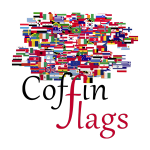Description
 Scotland is a country that is part of the United Kingdom. It covers the northern third of the island of Great Britain, with a border with England to the southeast, and is surrounded by the Atlantic Ocean to the north and west, the North Sea to the northeast, the Irish Sea to the south, and more than 790 islands, including the Northern Isles and the Hebrides. Although Edinburgh is the capital of Scotland, the largest city is Glasgow, which has just over 584,000 inhabitants. The Greater Glasgow conurbation, with a population of almost 1.2 million, is home to nearly a quarter of Scotland’s population. The Central Belt is where most of the main towns and cities are located, including Glasgow, Edinburgh, Dundee, and Perth. Scotland’s only major city outside the Central Belt is Aberdeen. The Scottish Lowlands host 80% of the total population, whereas the Central Belt accounts for 3.5 million people. In general, only the more accessible and larger islands remain inhabited. Currently, fewer than 90 remain inhabited. The Southern Uplands are essentially rural in nature and dominated by agriculture and forestry.
Scotland is a country that is part of the United Kingdom. It covers the northern third of the island of Great Britain, with a border with England to the southeast, and is surrounded by the Atlantic Ocean to the north and west, the North Sea to the northeast, the Irish Sea to the south, and more than 790 islands, including the Northern Isles and the Hebrides. Although Edinburgh is the capital of Scotland, the largest city is Glasgow, which has just over 584,000 inhabitants. The Greater Glasgow conurbation, with a population of almost 1.2 million, is home to nearly a quarter of Scotland’s population. The Central Belt is where most of the main towns and cities are located, including Glasgow, Edinburgh, Dundee, and Perth. Scotland’s only major city outside the Central Belt is Aberdeen. The Scottish Lowlands host 80% of the total population, whereas the Central Belt accounts for 3.5 million people. In general, only the more accessible and larger islands remain inhabited. Currently, fewer than 90 remain inhabited. The Southern Uplands are essentially rural in nature and dominated by agriculture and forestry.
The flag of Scotland, also known as St Andrew’s Cross or the Saltire, consists of a white saltire defacing a blue field. The Saltire, rather than the Royal Standard of Scotland, is the correct flag for all private individuals and corporate bodies to fly. It is also, where possible, flown from Scottish Government buildings every day from 8:00 am until sunset, with certain exceptions. Use of the flag is first recorded with the illustration of a heraldic flag in Sir David Lyndsay of the Mount’s Register of Scottish Arms, circa 1542. It is possible that this is based on a precedent of the late 15th century, the use of a white saltire in the canton of a blue flag reputedly made by Queen Margaret, wife of James III (1451–1488).








